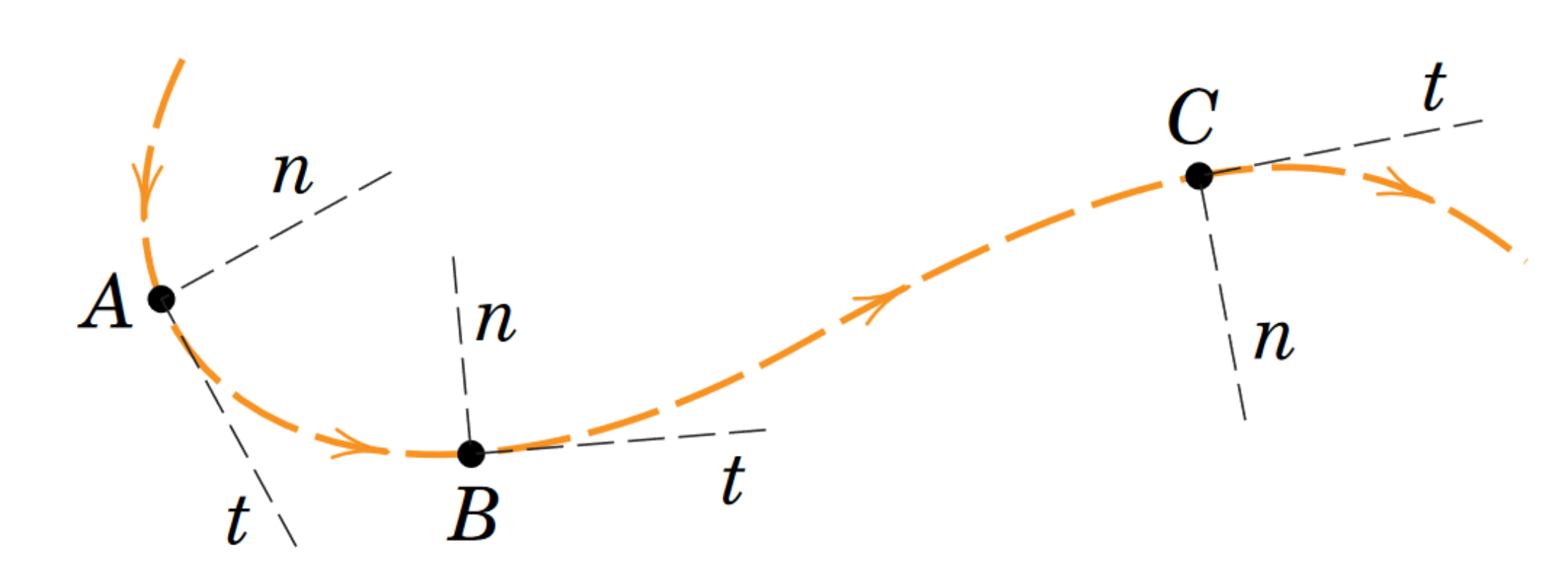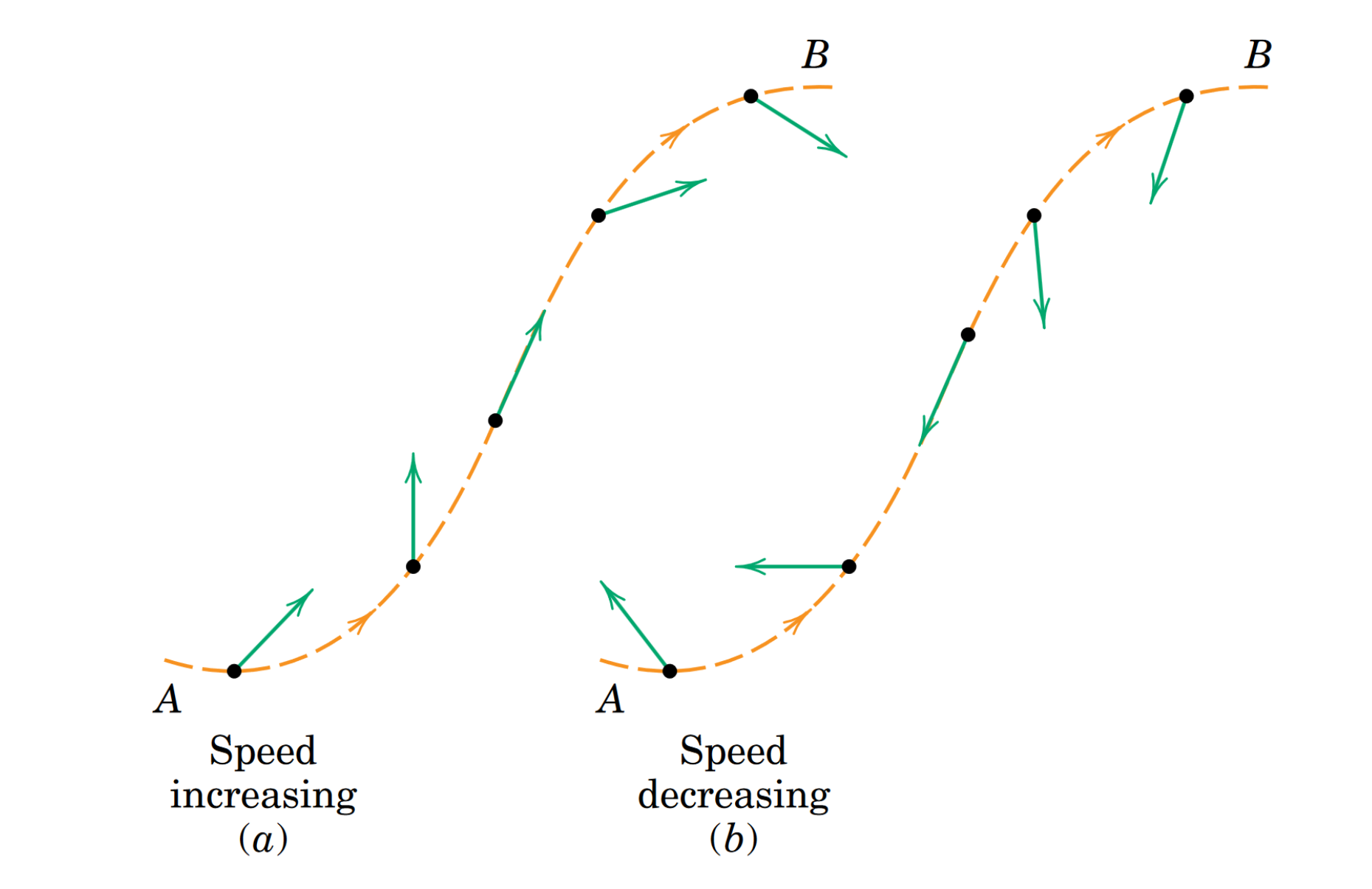Normal-tangential coordinates (also coordinates), are defined by a tangential and a normal component to movement.
Unit vectors
We introduce two unit vectors: in the normal direction, and in the tangential direction.
In , both the tangent and normal vectors can have two possible orientations. Questions will specify which orientation to consider. When we extend to , there are infinitely many normal vectors, so we don’t consider this case.
Visualisation
A more useful geometric interpretation comes from our understanding of vector-valued functions. The positive direction will always point towards the centre of curvature; if curvature changes direction, so too will the positive -direction. At an inflection point, the normal acceleration goes to 0 because approaches infinity.


Kinematics
We can relate coordinates with coordinates in circular motion problems. We can’t express displacement in coordinates, but we can express velocity and acceleration.
Finding isn’t very easy, so instead:
Then:
Tangential acceleration changes the magnitude of the velocity.
- is being pulled in the direction of the unit tangent vector, speeding up.
- means being pulled in no direction with no change in speed.
- means being pulled against the direction of the unit tangent, slowing down.
Normal acceleration changes the direction of the velocity.
- is pulled in the direction of the normal unit vector. Opposite is vice versa.
- has no change in direction.
